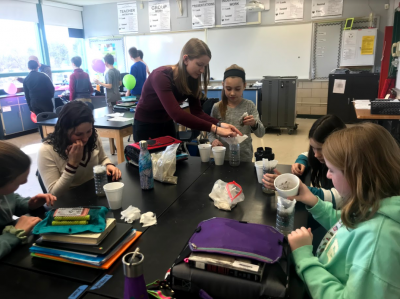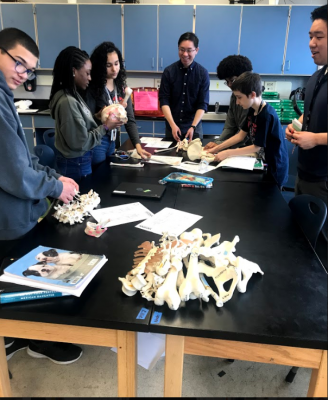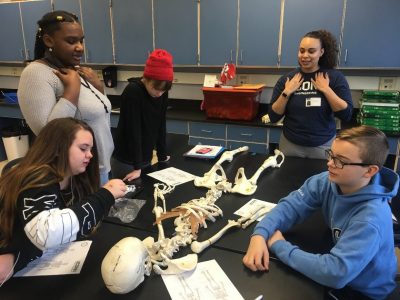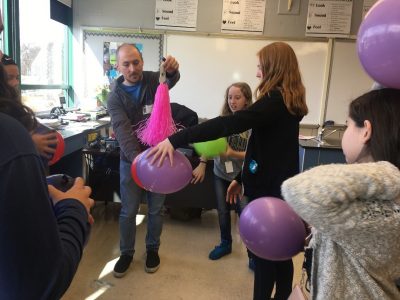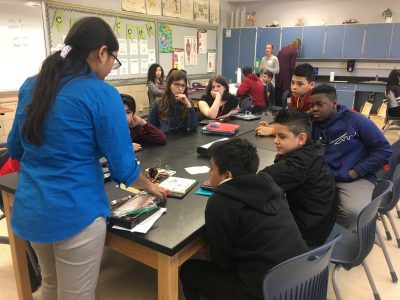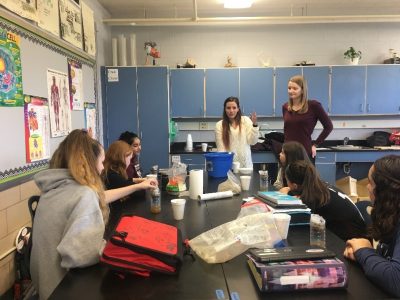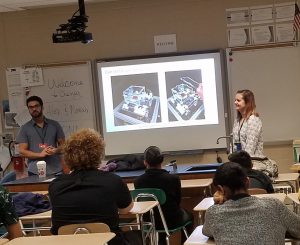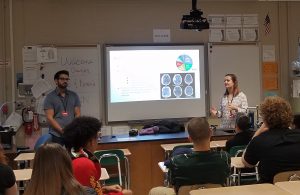Run by graduate students from various departments within the University of Connecticut School of Engineering, the John Lof Leadership Academy aims to train its members to become leaders in their fields. The Academy provides training and workshops focused on leadership through the lens of the individual member’s career and personal goals. Through that training, Academy members focus their time on honing their skills through practice, which is done through collaboration and outreach.
As part of that goal rooted in outreach, the Lof Scholars visited Illing Middle School in Manchester, Connecticut on March 25. The Lof scholars spent the day talking about UConn and our engineering programs and sparked students towards the field of engineering through the use of fun, active learning.
Throughout the day, the Lof Scholars worked with over 150 students. Students learned how to make water filtration apparatuses, they studied biomechanics using a human skeleton and learned about electromagnetics, which introduced them to the fields biomedical, electrical, environmental, civil, chemical, and mechanical engineering. The Lof scholars found the opportunity very rewarding as they were able to bring their research to kids in a fun and interesting way.
